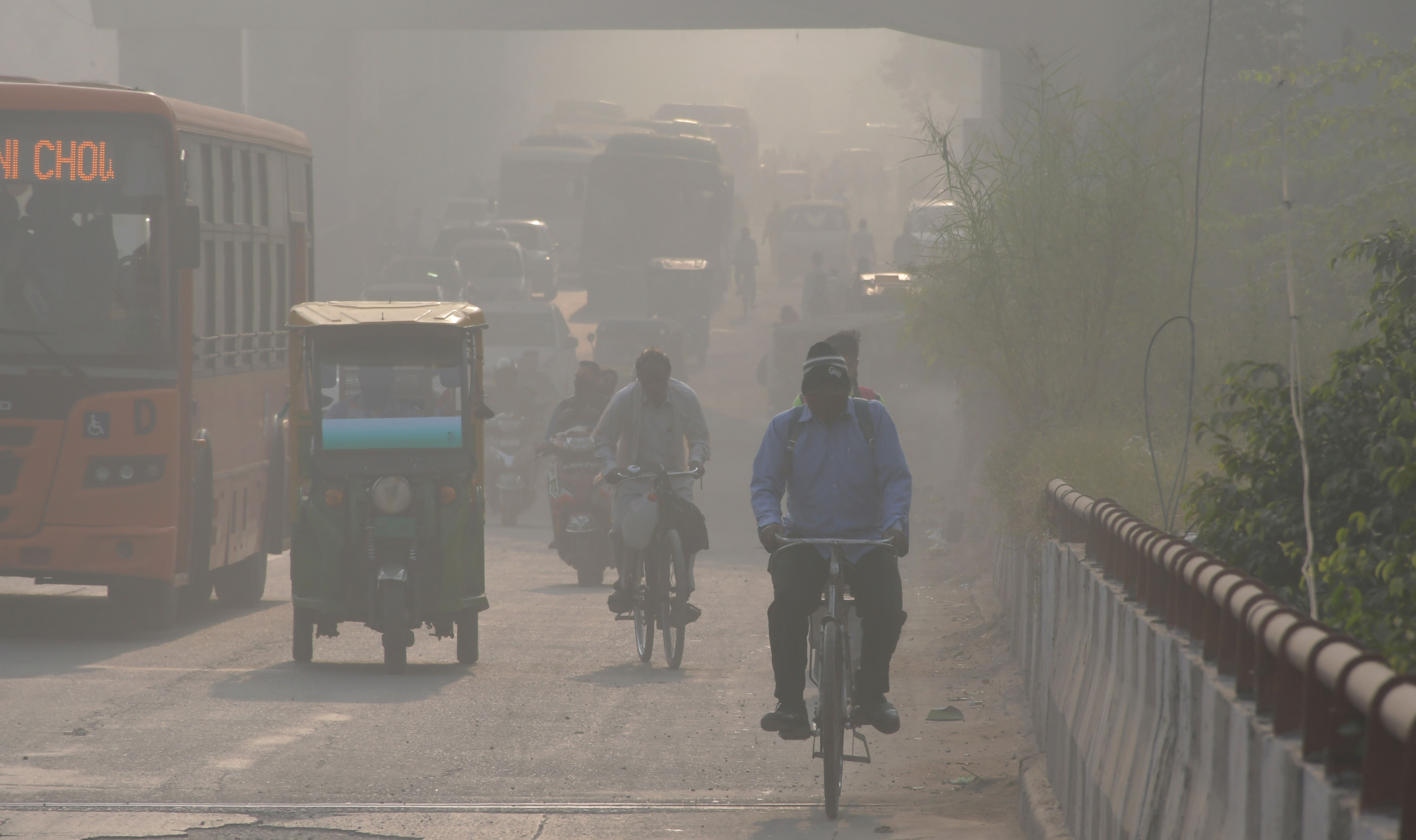Environmentalists say the public transport system must be improved to reduce the load of private vehicles on Delhi roads.
New Delhi: Five years have passed since IIT Kanpur had submitted a detailed 334-page report to the Delhi government, identifying the key sources of air pollution and providing a roadmap to address the issue of winter air pollution in the national capital. Despite this, air pollution in Delhi moves to the “severe” category every year during the winter season. Incidentally, the same IIT Kanpur has been once again asked to submit another detailed report on sources of Delhi’s air pollution and real-time forecast on air quality by the Delhi government in October this year.
The same IIT Kanpur who will conduct the study again, earlier in its report to the Delhi government in January 2016 had said that “in view of the limited resources available, no separate or repetitive study is required in NCR and Delhi for re-establishing source-receptor impacts; the focus should be on early implementation of action plan.”
However, the new study by IIT Kanpur has been commissioned by the Delhi government and the Delhi Pollution Control Committee (DPCC). For this, the Delhi government has allocated a fund of Rs 12.727 crore.
The action plan that was submitted by IIT Kanpur in 2016 to the Delhi government included the suggestions to stop usage of coal in restaurants and hotels, carpeting of areas with shoulders, grass and shrubs from where dust pollution could be caused, mechanical sweeping of roads, water spraying on roads to contain dust pollution, improvement of public transport system, introduction of electric and hybrid vehicles to contain vehicular pollution, complete ban on biomass burning and burning of Municipal Solid Waste, amongst many other such measures.
The IIT Kanpur study conducted in 2015 said, vehicular pollution, dust pollution and industrial emission are some of the biggest contributors of Delhi’s deteriorating air quality. IIT Kanpur in its report in 2015 said, “Vehicular pollution source is the second largest source and most consistently contributing source to PM10 and PM2.5 in winters. Vehicular pollution in Delhi has grown from 64% to 72% from 1990 to 2000, whereas petrol and diesel consumption have grown by 400% and 300% respectively.”
Some of the control options suggested by the Institute included the implementation of Euro VI, introduction of electric and hybrid vehicles, traffic planning and restriction of movement of vehicles, retro fitment in diesel exhaust, improvement in public transport etc.
However, the condition of the public transport system in Delhi is abysmal. The dying fleet of DTC buses and the LG-state politics over inducting cleaner and fuel-efficient buses has either forced citizens of Delhi to take to two-wheelers or use other means of transport for commuting in the national capital. Delhi has just about 3700 DTC buses against the requirement of about 11,000 buses for public transport in the national capital.
Delhi, as of October 2021, has more than 1.25 crore registered vehicles in Delhi. Delhi government officials say that out of the total vehicles registered in Delhi, 50% are two wheelers. Sources in the Delhi government said that the increase seen in the number of two wheelers is because of the Covid situation where people are hesitant to take public transport; also there had been restrictions in the usage of public transport and apart from this, the last mile connectivity in Delhi is still something that the government is working on and has not been able to completely address.
Environmentalists also say that the Delhi government must focus on improving the public transport system in the city to reduce the load of private vehicles from Delhi roads. “Delhi needs to do a lot more to control vehicular pollution. The number of vehicles in Delhi is huge. It must scale public transport, walking and cycling infrastructure to control the local causes of pollution. Delhi has about 1.25 million vehicles in the city, that’s a huge number,” Anumita Roy Chowdhury, environmentalist and Project Manager with Centre for Science and Environment, told The Sunday Guardian.
The Delhi government since 2016 had promised to ramp up the public transport system, but since the last five years the government has not been able to induct any new buses into its already depleting fleet of buses. The latest deadline for bringing in more buses to Delhi Public transport system missed has been that of September 2021. Chief Minister Arvind Kejriwal in January this year had announced through his tweet that Delhi would be getting a fleet of about 1000 new low-floor CNG buses by September this year, but till November 2021, no new buses had been inducted into the DTC bus fleet.
The pollution in Delhi is also largely because of farm fires in the neighbouring states.
As suggested by the IIT Kanpur report, mechanical sweeping of roads, dust control from construction sites, spraying water to contain dust is also hardly seen to be executed either by the Municipal Corporations of Delhi or by the Delhi government.
Dust in the winter contributes to about 15% of the total PM2.5 in the air quality index of Delhi. Like every year, even this year, Delhi’s air quality plummeted to the severe category ever since the beginning of November. The Air Quality Index of Delhi throughout November and the end of October remained between the very poor to severe category with a thick blanket of smog covering the national capital and its neighbouring areas.

